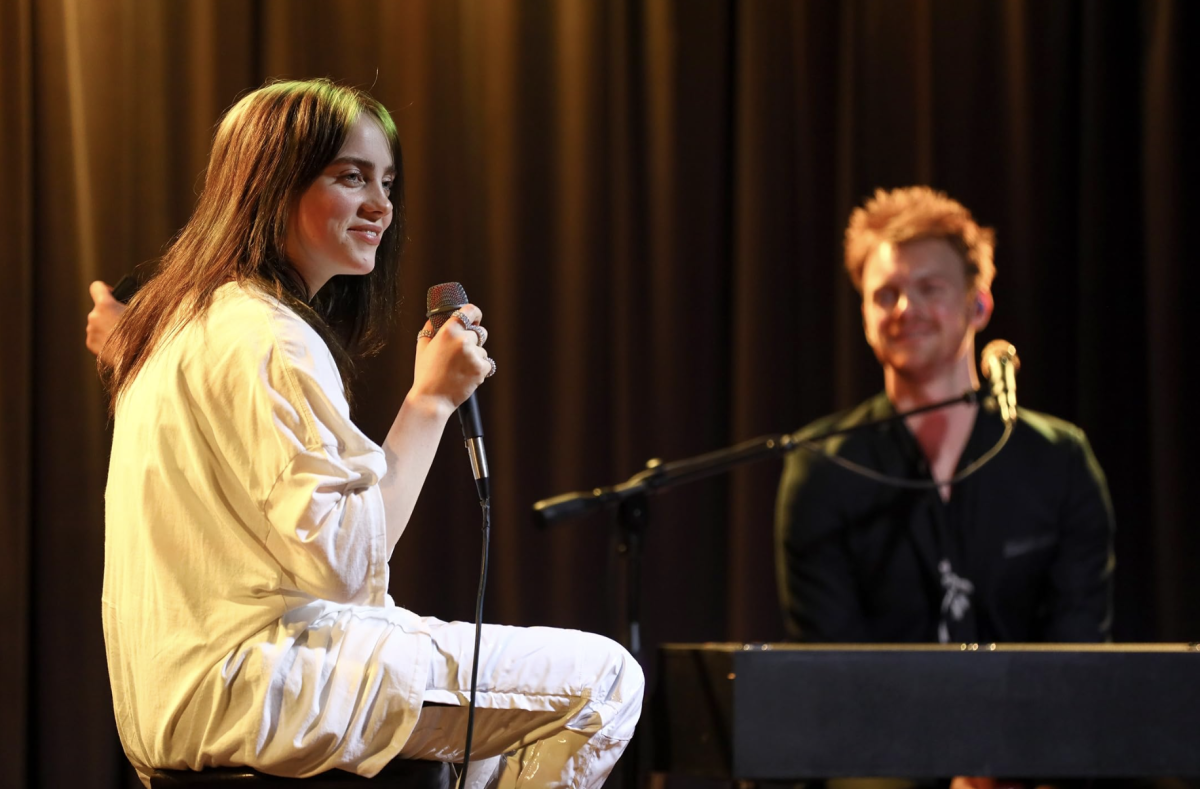
Phish will be playing a two-night concert at the Mullins Center on Saturday and Sunday as part of their Fall 2010 tour. Phish is a four-piece band from Burlington, Vt. with a sound that ranges from progressive rock to jazz-fusion and classical. This will be their first Mullins Center appearance since 1995.
Phish is known for popularizing long-form, extended improvisation, playing for hours on end, and elaborate light shows and stage antics, but what sets them apart the most from other “jam bands” like Moe. or The Grateful Dead is the classical form of their compositions. Guitarist Trey Anastasio is a classically trained musician, and this training can be heard in many of his compositions such as “You Enjoy Myself” and “Reba.” While Phish is sometimes referred to as a continuation of The Grateful Dead because of their live improvisation, their classical and jazz-fusion style is often compared to that of Frank Zappa, Igor Stravinsky, Yes and The Mahavishnu Orchestra.
Formed in 1983, Phish has dramatically evolved over the decades. Early in their career, they play old bebop standards as avant-garde and progressive compositions, such as “Dave’s Energy Guide” and “Fluffhead.” By the early 1990s, Phish began adding more elements of rock to their repertoire, and by the mid 1990s, they had reached a peak in the energy of their jamming, heard in shows such as Halloween (1994) or Madison Square Garden from Dec. 31, 1995. Phish jams in this era were furiously energetic, cohesive, and moving, using many elements of jazz-fusion. The band had perfected their unique brand of jamming, which often consisted of falling into loose, frenetic, musical chaos, followed by gradual molding of each instrument’s part back into the structure of the jam before climaxing in a sustained, triumphant release.
Anastasio crafted his now famous style consisting of abstract tonality, ascending chromatic passages, feedback, climaxes, teases, and sustain, using his unique, rich, semi-hollowbody, tube-amp tone.
By 1997, Phish began to incorporate more elements of funk into their songs, and played more groove-oriented jams (check out The Moma Dance from Oct. 3, 1998 or Down With Disease from Oct. 31, 1996). Phish celebrated the millennium by playing Big Cypress, an 85,000 person festival in Florida, but soon after, announced their first hiatus.
After working on solo projects for two years, the band members reunited on New Year’s for two more years of tours. Their performances during this era were marked by flubs and mistakes, and was much less tightly performed than before, possibly due to Anastasio’s recent heroin use. Phish continued for two more years before finally calling it quits after performing at Coventry, a 2004 Phish Festival with over 65,000 fans.
Over the next five years, all four band members’ side projects continued to produce music and tour, but amidst the touring, Anastasio was arrested for multiple drug-related infractions. After rehabilitating, practicing, and composing, he was ready to reconstitute the band, which eventually took place in March of 2009, and lasted three nights at the Hampton Coliseum in Virginia. Since then, the band has been touring almost every season, selling out arenas around the country. Phish’s new sound is characterized by their strict attention to details in compositions, Anastasio’s new tone, and the overall cleanliness, sobriety, and professionalism of the performance, in which they almost never make mistakes or lose their energy.
Phish is famous for its elaborate stage antics, audience participation, and running themes throughout a show. During a part of “You Enjoy Myself,” Anastasio and bassist Mike Gordon always do a choreographed dance on trampolines; in “Divided Sky,” Anastasio and Gordon jump in a synchronized pattern while playing in odd time signatures. In a tour in 1995, Phish played games of chess against the collective audience. Moments after the Chilean miners were rescued, Phish played “Light,” “Theme From the Bottom,” and “Free,” and every Halloween, they cover a different famous album in its entirety.
But above all other features of a Phish concert are the lights, programmed by Chris Kuroda. Often referred to as Phish’s fifth member, Kuroda has been working with the band for decades, synchronizing the light show with both the compositions and the improvisation, creating chaotic, colorful strobe effects for building tension, white flood lights for sustained releases of tension, and gentle, colored washes for mellower, soothing sounds. Phish always brings interesting set lists, full of surprises, when they play at the University of Massachusetts. Perhaps we remind them of their own University of Vermont, or maybe it’s that the Mullins Center is a relatively cozy and intimate 10,000-seater. Either way, the more “phun” they have playing here for us, the sooner they’ll return for more.
Ben Silverman can be reached at [email protected].







Dean C. • Oct 24, 2010 at 2:26 pm
Great article! Very impressive
Vincent b • Oct 22, 2010 at 8:53 pm
Don’t forget the beach balls.
Peter • Oct 22, 2010 at 4:37 pm
The article is very excellent
Love it over here
wook#17 • Oct 22, 2010 at 12:42 pm
great article brah. need a kickdown to getdown. and molly. lots of molly.
Brian • Oct 22, 2010 at 12:28 pm
Excellent article.
jeff • Oct 22, 2010 at 11:00 am
agreed! Great article. See you at the show tomorrow!
Joe • Oct 22, 2010 at 2:58 am
Wow! Congrats! I am an English grad student, a professional musician, and Ive seen around 45 Phish shows. This has to be one of the best pieces on Phish I have ever read (and I read way too much of this stuff)